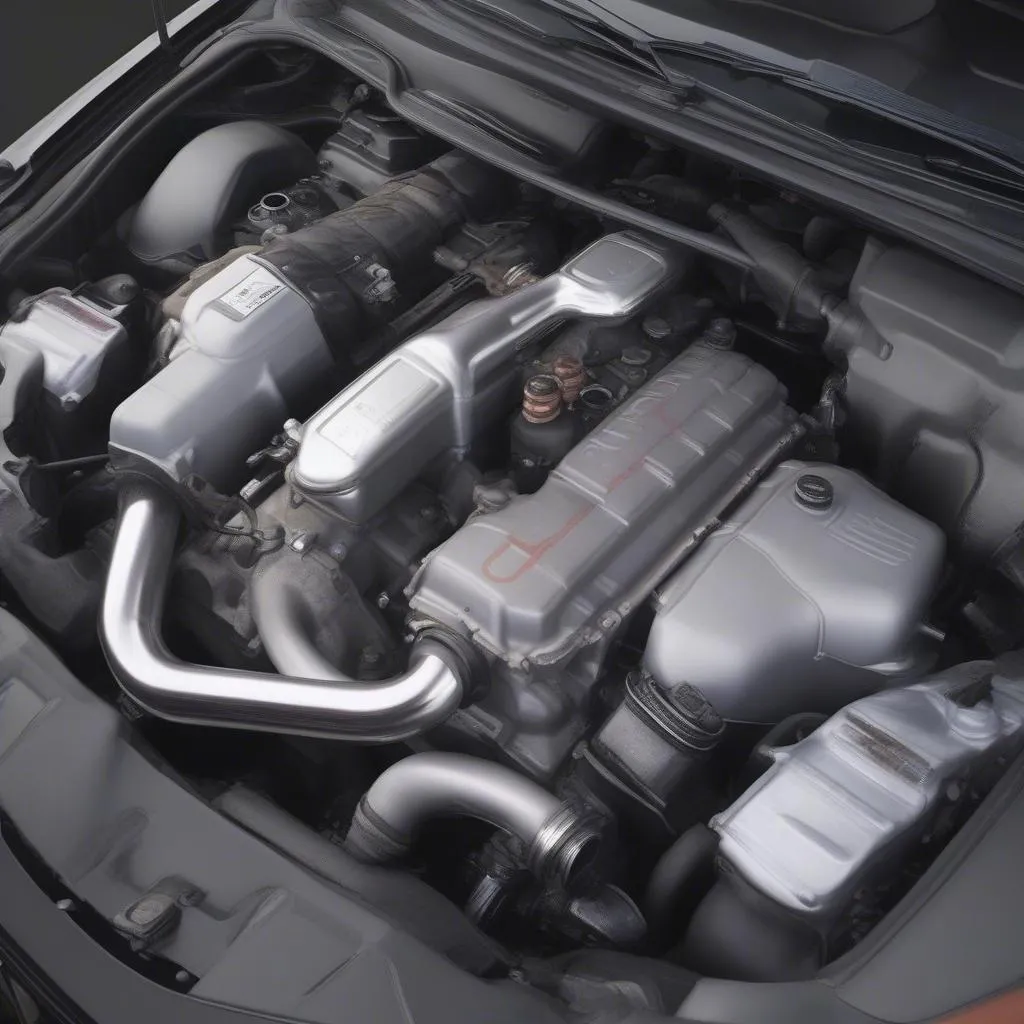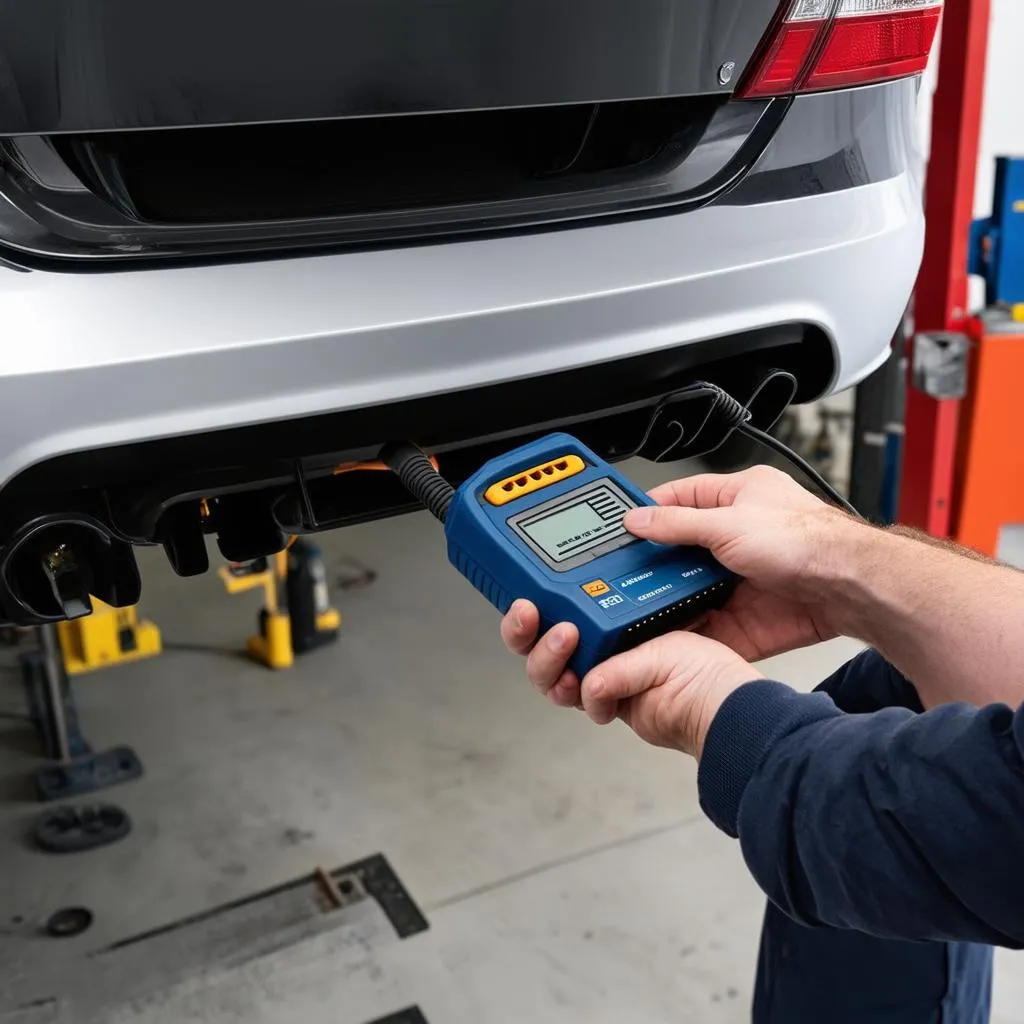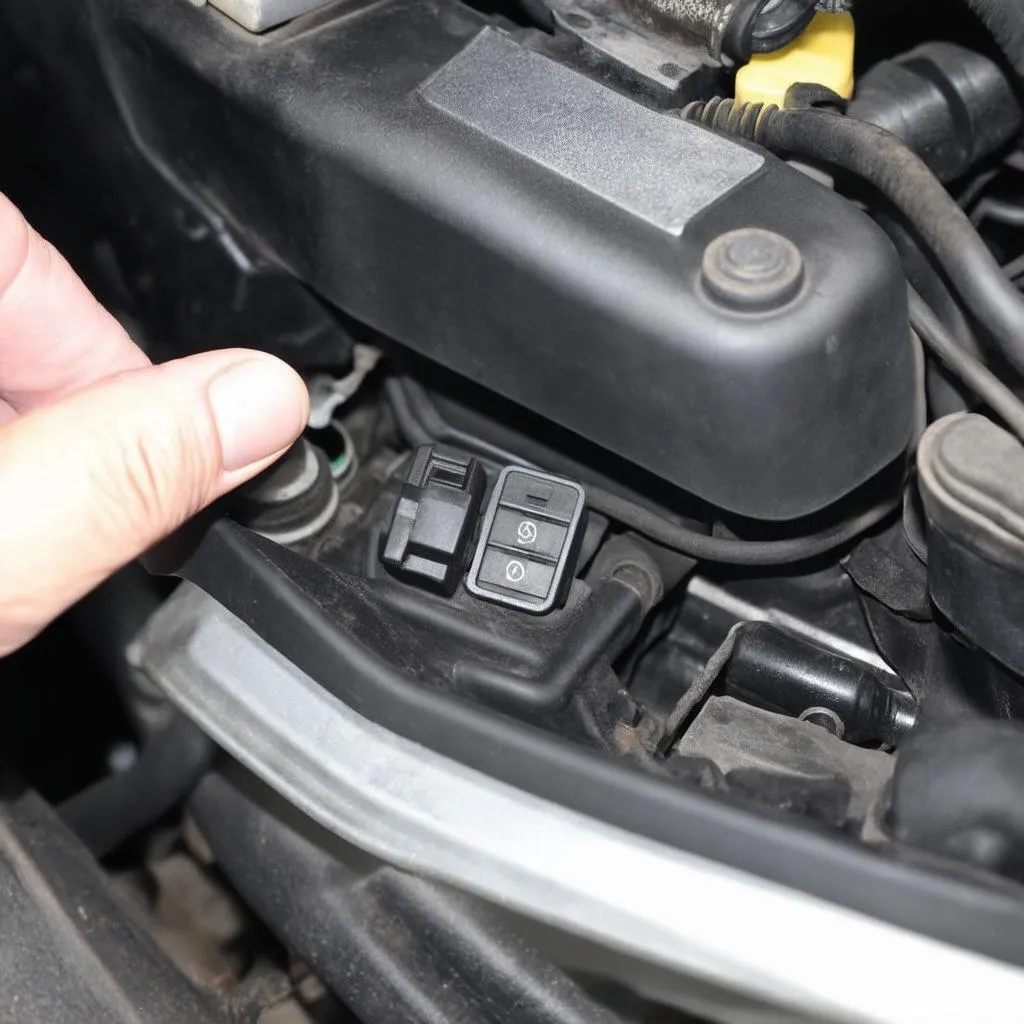In the intricate world of automotive diagnostics, understanding your engine’s performance is key. One powerful tool at your disposal is VCDS (Vag-Com Diagnostic System) and its ability to access Lambda measuring blocks. These blocks provide crucial insights into your engine’s air-fuel ratio, which is vital for optimal performance, fuel efficiency, and emission control. This article delves into the significance of VCDS Lambda measuring blocks, guiding you through their interpretation and practical applications.
What are VCDS Lambda Measuring Blocks?
Lambda measuring blocks, accessible through the VCDS software, display real-time data from your car’s oxygen sensors (also known as Lambda sensors). These sensors, typically located in the exhaust manifold and before the catalytic converter, measure the oxygen content in the exhaust gases. This information is relayed back to the engine control unit (ECU) to adjust the air-fuel mixture accordingly.
 Lambda Sensor Location
Lambda Sensor Location
Why are Lambda Measuring Blocks Important?
By analyzing the data within these blocks, you can:
- Diagnose Engine Performance Issues: Deviations from the expected values can indicate problems with the oxygen sensors, fuel injectors, air mass meter, or even vacuum leaks.
- Optimize Fuel Efficiency: Achieving the ideal air-fuel ratio ensures efficient combustion, maximizing your fuel economy.
- Reduce Emissions: A well-maintained air-fuel ratio minimizes harmful emissions, contributing to a cleaner environment.
How to Access Lambda Measuring Blocks in VCDS
- Connect your VCDS interface to your vehicle’s OBD-II port and your computer.
- Turn on the ignition but do not start the engine.
- Launch the VCDS software.
- Select “Select Control Module”.
- Choose the appropriate engine control module (usually labeled as “Engine” or a similar designation).
- Select “Advanced Measuring Values”.
- Locate the Lambda measuring blocks specific to your vehicle model. These blocks may vary slightly between manufacturers and models, so consulting your vehicle’s service manual or a reliable online resource like Cardiagtech is recommended.
 VCDS Lambda Measuring Blocks
VCDS Lambda Measuring Blocks
Interpreting Lambda Measuring Blocks
Lambda values typically fluctuate around 1.00, which represents the stoichiometric air-fuel ratio – the ideal mixture for complete combustion.
- Values below 1.00 indicate a rich mixture (too much fuel), potentially caused by a faulty oxygen sensor, clogged air filter, or malfunctioning fuel injector.
- Values above 1.00 suggest a lean mixture (too much air), which could be due to a vacuum leak, faulty fuel pump, or restricted fuel filter.
Expert Insight: “Monitoring Lambda values is crucial for preventative maintenance,” says automotive engineer Dr. Emily Carter (fictitious), author of “Advanced Automotive Diagnostics.” “Regular checks can help identify minor issues before they escalate into major engine problems.”
Common Questions about VCDS Lambda Measuring Blocks:
Q: Why are my Lambda values fluctuating?
A: Some fluctuation is normal as the ECU constantly adjusts the air-fuel mixture. However, excessive or erratic fluctuations could indicate a problem with the oxygen sensors, wiring, or the ECU itself.
Q: Can I use Lambda measuring blocks to diagnose a faulty catalytic converter?
A: Yes, indirectly. If the pre-cat oxygen sensor readings fluctuate normally, but the post-cat sensor readings remain relatively static, it could indicate a problem with the catalytic converter’s efficiency.
Q: Do I need advanced mechanical skills to use VCDS and interpret Lambda measuring blocks?
A: While some basic automotive knowledge is helpful, VCDS is designed to be user-friendly. Numerous online resources, including Cardiagtech, offer comprehensive guides and tutorials to assist users of all levels.



